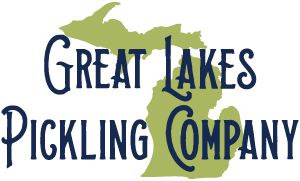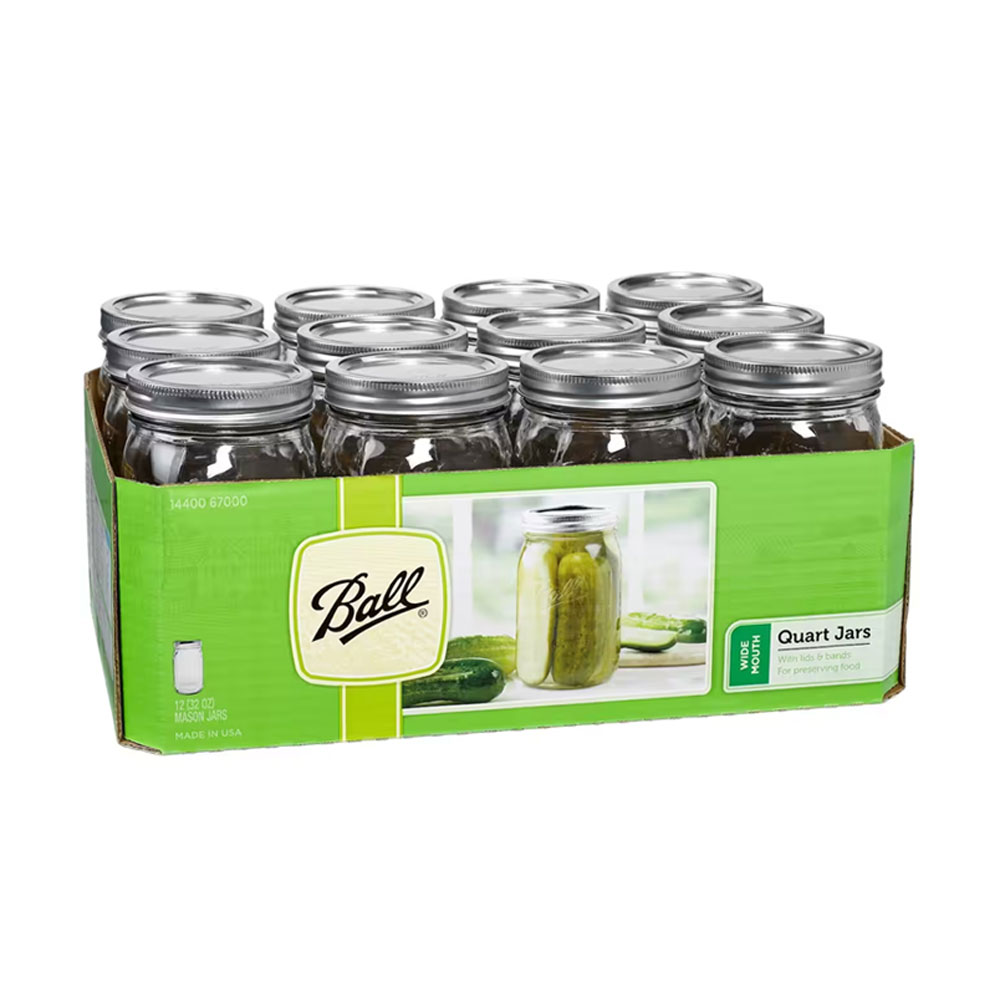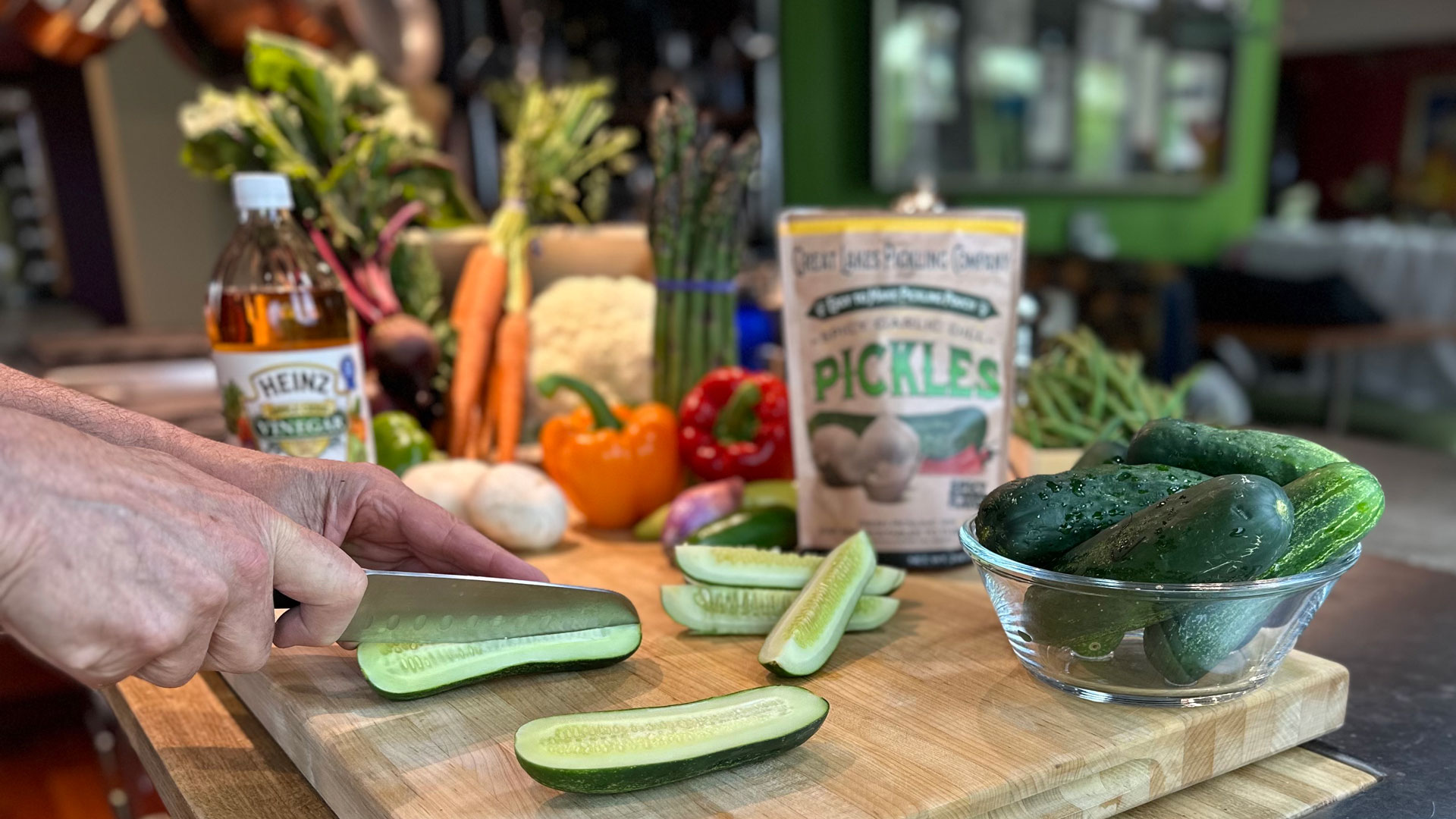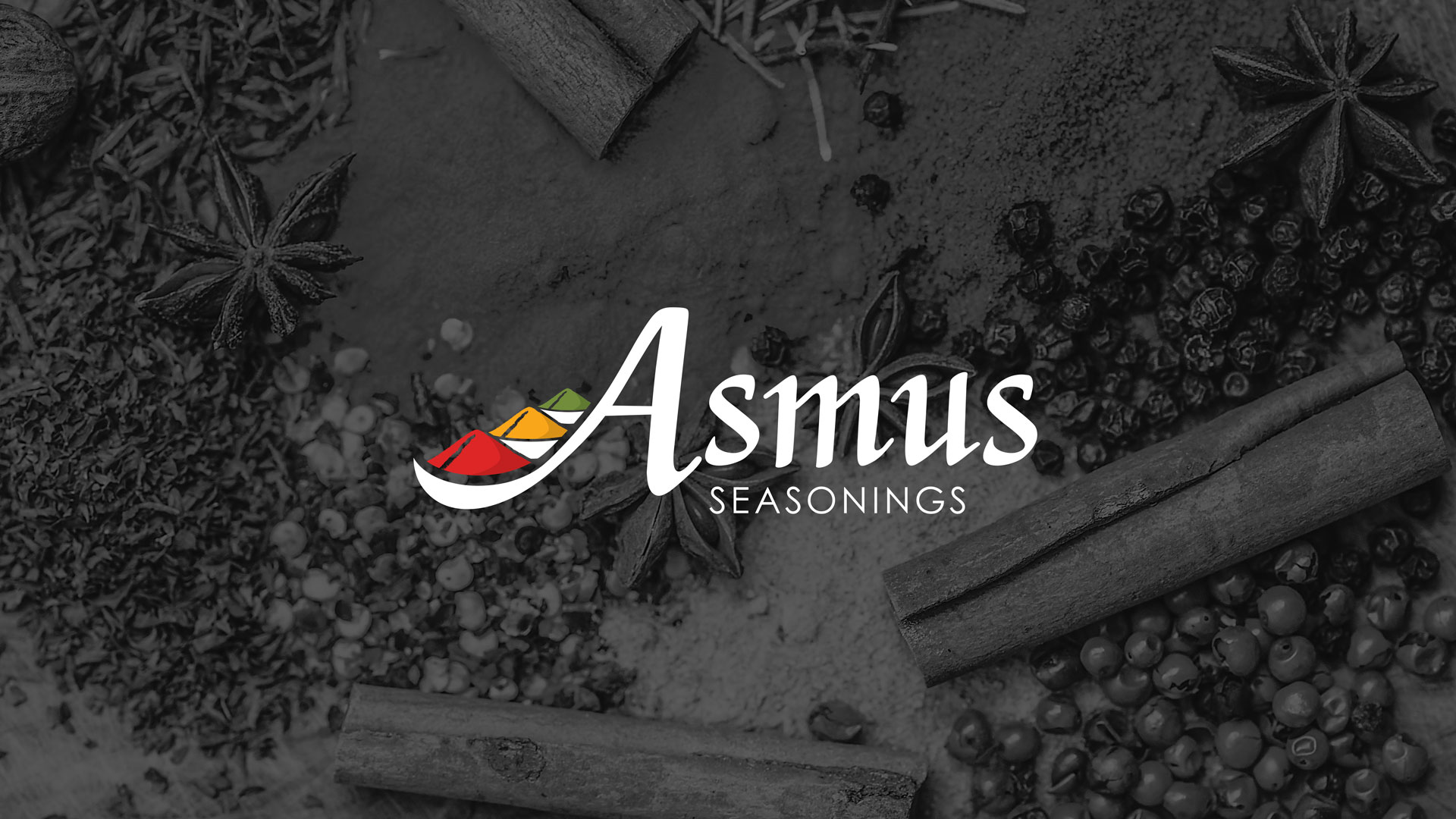Beyond the word “sterilization,” you also hear words like “processing,” “water bath method,” and “pressure canning.”
Canning does not necessarily use a “brine” to preserve food. It uses heat, and sometimes, both heat and pressure.
Products that are effectively sterilized by the canning method can last for years.
Pickling is something else altogether. Pickling (while a type of preservation) uses an acid (vinegar) that anaerobically “ferments” the food by producing lactic acid from the fruit’s own sugars, which in turn, extends its shelf life.
Pickling is a method that can create delicious results for products such as cucumber pickles, carrots, green beans, okra, radishes, bell peppers, asparagus, cauliflower, chili peppers, etc.
Fruits and vegetables with a high acid content must use traditional canning methods to ensure their extended safety.
Yet even pickling has 2 options:
- Use a pickling brine and then can the product (with heat).
- Use a cold pickling brine, and then refrigerate the product.
The Great Lakes Pickling Pouches use this last method. The result will be the freshest, most delicious pickled products you’ve ever tasted.

Unlike canned vegetables, which are cooked and often rubbery and soft and might last a year or more in a jar, our pickling pouches create a product that’s full of flavor with that “crisp snap” that every pickler loves.
You can expect to get 3 to 4 weeks of pickled goodness from each recipe you try.



